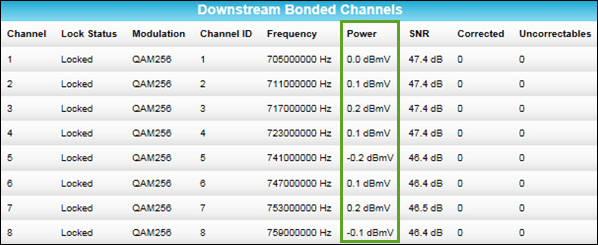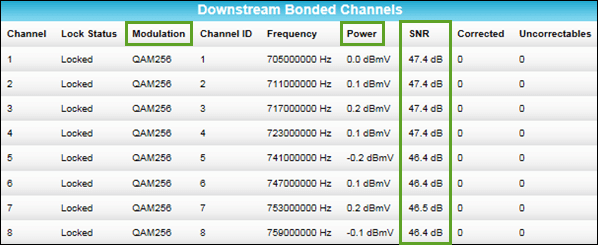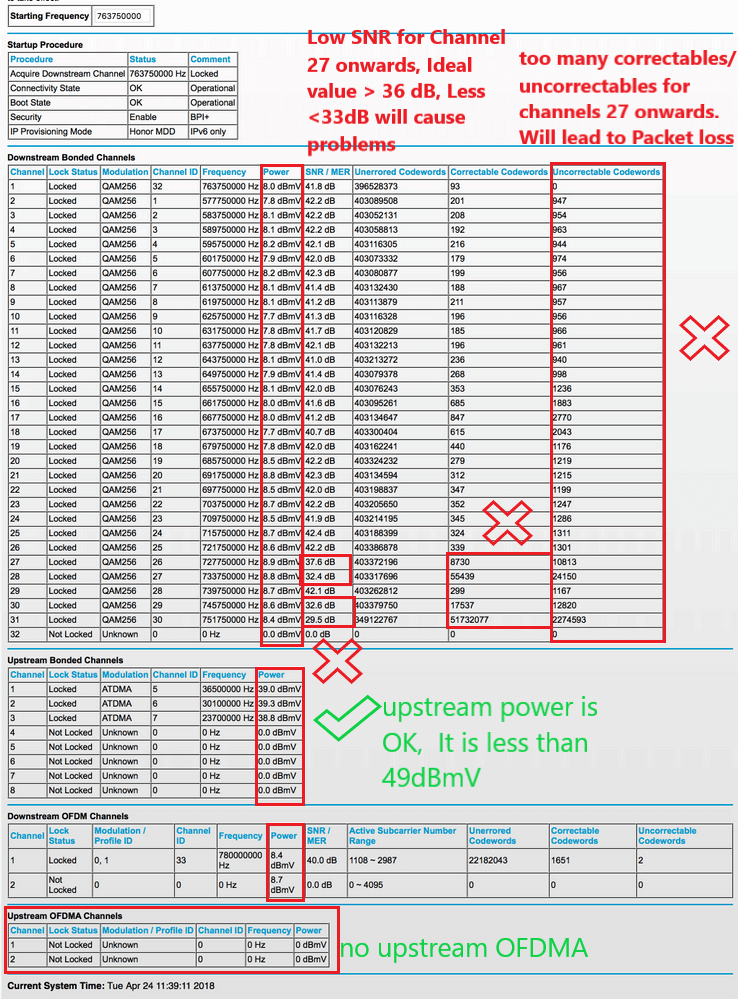Why do you need correct signal level on your modem?
Signal levels on your home Cable Modem need to be at an optimal level for Cable modem to operate correctly. Otherwise, you might end up with lower speed/throughput, occasional or repeated disconnections, video buffering, higher latency, etc
What DOCSIS 3.0 or DOCSIS 3.1 Modems are recommended for best Signal levels?
It is always advisable to choose a modem with extended upstream power capability. Some of the modems in the market which have this capability are: Arris SB6183, NETGEAR CM500, Motorola SB8200, NETGEAR CM1000, etc. Note that not all the ISPs enable extended upstream power as it has to be configured from the ISP headend. We know that Xfinity/Comcast enables Extended upstream power on all the compatible modems giving your additional signal power.
Best DOCSIS 3.1 Cable Modems (All of these modems have extended Upstream power capability)
Best DOCSIS 3.0 Cable Modem (Arris SB6183 has Extended Upstream Power capability)
Best DOCSIS 3.0 Wi-Fi Cable Modem Router (NETGEAR C7000 has Extended Upstream Power capability)
Best DOCSIS 3.0 Xfinity voice Modem Router (Arris SVG2482 has Extended Upstream Power capability)
Best DOCSIS 3.0 Xfinity voice Modem (NETGEAR CM500V has Extended Upstream Power capability.)
Best DOCSIS 3.0 Mesh Wi-Fi Modem Router Sytem (NETGEAR CBK40 has Extended Upstream Power capability)
How to find downstream and upstream signal levels?
On almost all the Cable Modems or Cable Modem Routers, you can find your signal level by logging into the modem diagnostic GUI page via http://192.168.100.1 and username/password (unless you have changed credentials on the device, default credentials should be located on label on the device bottom or side).
Arris Cable Modems: Sb6183 Signal Levels
For example, on an Arris SB6183, Launch a web browser, such as Internet Explorer, Firefox, or Safari. Enter http://192.168.100.1 into the address box. The Status page will appear. It will have 2 sections, one for downstream signal levels and second one for upstream power levels. If you are connected behind a router and page does not open, remove the router and connect your PC directly behind the modem using Ethernet cable.
Downstream signal levels


Upstream power levels

Here is another example. We have taken an example screenshot of a NETGEAR CM1000 DOCSIS 3.1 Modem and shown what is good vs bad signals. Here is the review of the signal conditions of this particular modem
- Downstream Power: Downstream power is bit too high and ideally should be below +7dB. Should not cause major problems
- SNR: Several downstream channels very low SNR. There are wiring and cabling issues either in the home or outside home or there is noise which is causing low SNR on particular channels. This is bound to cause lot of problems.
- Uncorrectables: several channels have very high number of uncorrectables and they will lead to packet loss and you will see slow downloads, slow video performance, etc
- Upstream Power: Upstream looks OK and within range
- Downstream DOCSIS 3.1 OFDM channels: Downstream power is bit too high and ideally should be below +7dB. Should not cause major problems
- Upstream DOCSIS 3.1 OFDMA channels: Blank since ISP has not enabled is any upstream OFDMA channels.

What are optimum signal levels for my modem?
Downstream (Rx) Signal Levels:
This is the amount of signal received by the modem from your ISP. For all modems DOCSIS 3.0 / 3.1:
- -7 dBmV to +7 dBmV are "Recommended" values.
- -8 dBmV to -10 dBmV / +8 dBmV to +10 dBmV are "Acceptable" values but out of spec from ISP. A technician should still fix this to get to recommended levels.
- -11 dBmV to -15 dBmV / +11 dBmV to +15 dBmV are "Maximum" values but out of spec from ISP. A technician should still fix this to get to recommended levels. It is strongly recommended for you to force ISP tech to fix it since your power levels are close to edge.
- Lower than -15 dBmV & Higher than +15 dBmV are out of DOCSIS 3.0 specifications and modems may not work at all or cause lot of problems
SNR (signal to noise ratio) levels:
This is how clear the signal is at the modem receiver (downstream SNR) .
DOCSIS specifications list minimum CNR (carrier to noise ratio) levels not SNR levels. The SNR levels listed here are based on commonly recommended MER levels for digital cable signals.
- 256 QAM: 30 dB minimum. 33 dB or higher is recommended. Most ISPs run 256-QAM in downstream.
- 64 QAM: 24 dB minimum. 27 dB or higher recommended. Some ISPs have 64-QAM in downstream but rare
- 16 QAM: 18 dB minimum. 21 dB or higher recommended. It is very rare for ISP to use 16-QAM on newer DOCSIS 3.0 networks.
- QPSK: 12 dB minimum. 15 dB or higher recommended. It is very rare for ISP to use QPSK as performance on this modulation is very low.
Upstream (Tx) Transmit Power level:
This is the amount of signal transmitted by the modem to reach the receiver in the cable company head-end. This is a problem in most homes and most common cause of internet disconnects.
These are generic recommended power levels
*Recommended Upstream signal levels are +35 dBmV to +49 dBmV (DOCSIS 3.1)
*Recommended Upstream signal levels are +35 dBmV to +49 dBmV (DOCSIS 3.0)
However, Upstream power levels depend on number of upstream bonded channels and type of upstream modulation (64-QAM, 16-QAM, etc). Most ISPs use either 3 or 4 bonded channels and are mostly 64-QAM.
| Number of Bonded US channels | 1 | 2 | 3 | 4 |
| DOCSIS 3.0 Specification for 64-QAM channel | 57 dBmV | 54 dBmV | 51 dBmV | 51 dBmV |
| Recommended Value for good operations | 35-49 dBmV | 35-49 dBmV | 35-49 dBmV | 35-49 dBmV |